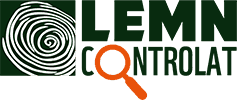Why do we need EUTR? (EU Timber Regulation no. 995/2010)
Illegal logging is a pervasive problem of major international concern. It poses a significant threat to forests as it contributes to the process of deforestation and forest degradation, which is responsible for about 20 % of global CO2 emissions, threatens biodiversity, and undermines sustainable forest management and development including the commercial viability of operators acting in accordance with applicable legislation. It also contributes to desertification and soil erosion and can exacerbate extreme weather events and flooding. In addition, it has social, political and economic implications, often undermining progress towards good governance and threatening the livelihood of local forest-dependent communities, and it can be linked to armed conflicts. Combating the problem of illegal logging in the context of this Regulation is expected to contribute to the Union’s climate change mitigation efforts in a cost-effective manner and should be seen as complementary to Union action and commitments in the context of the United Nations Framework Convention on Climate Change. (Paragraph 3, EUTR).
For the purpose of combating illegal logging and related trade, measures have been adopted within the EUTR to prohibit the first placement into the internal market of illegally harvested timber or derived timber products.
What means illegally harvested wood?
‘Illegally harvested’ means harvested in contravention of the applicable legislation in the country of harvest. (art.2, letter g, EUTR)
Applicable legislation
According to EUTR ‘applicable legislation’ means the legislation in force in the country of harvest covering the following matters:
- rights to harvest timber within legally gazetted boundaries,;
- payments for harvest rights and timber including duties related to timber harvesting;
- timber harvesting, including environmental and forest legislation including forest management and biodiversity conservation, where directly related to timber harvesting;
- third parties’ legal rights concerning use and tenure that are affected by timber harvesting;
- trade and customs, in so far as the forest sector is concerned.
Thus, the applicable legislation is also the legislation concerning harvesting rights payments and taxes, third party rights on use and ownership, timber harvesting legislation including environmental legislation where these are directly related to harvesting of wood.



